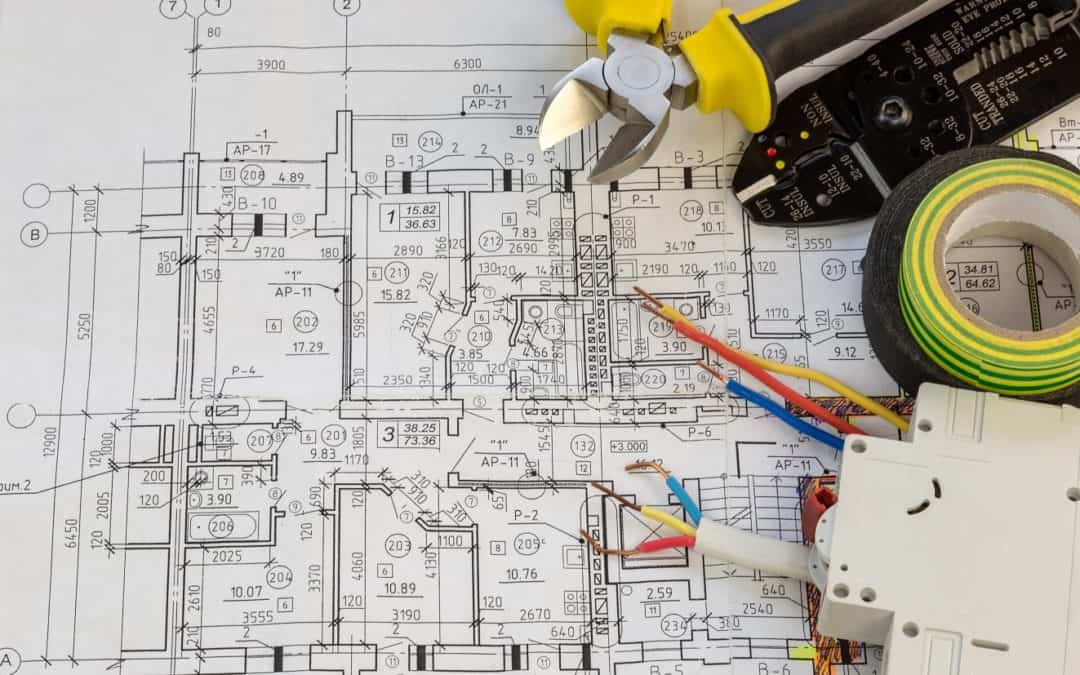Precise Electrical Load Calculation Services for Commercial and Industrial Facilities
Wiki Article
Ingenious Electric Design Solutions for Modern Infrastructure
The development of contemporary infrastructure necessitates innovative electrical design services that not only improve functional efficiency but likewise address sustainability difficulties. As metropolitan environments expand increasingly intricate, including innovations such as wise grids and renewable resource resources becomes paramount. These improvements not only guarantee to optimize energy usage however additionally foster durability versus future needs. Nevertheless, the landscape of electric design is undergoing quick transformation, triggering a better assessment of arising patterns and their implications for long-lasting infrastructure viability. What might the future hold for those who accept these innovative methods?Importance of Ingenious Electric Design
Innovative electrical design plays a crucial duty in modern framework, influencing not only performance yet additionally sustainability. As cities evolve and the need for power increases, the demand for advanced electrical systems ends up being paramount. These systems should not just fulfill existing needs yet also expect future growth and technological improvements.A well-executed electric design can considerably reduce power consumption, thus reducing operational costs and minimizing ecological impact. By including renewable resource sources, such as solar panels and wind turbines, ingenious layouts can improve energy independence and durability. Moreover, clever grid innovations enable real-time monitoring and management of power circulation, enhancing efficiency and minimizing waste.
Safety and security is another vital element of electrical design. Executing extensive criteria and innovative modern technologies can reduce dangers connected with electric failings, making certain a secure atmosphere for locals and companies alike. In addition, cutting-edge designs help with adaptability, enabling infrastructures to incorporate emerging modern technologies perfectly.
Trick Fads in Electric Design
As the landscape of electric design remains to advance, several key patterns are shaping the future of the industry. One considerable pattern is the assimilation of smart innovation right into electrical systems. The spreading of the Net of Things (IoT) has actually made it possible for real-time tracking and control of electrical tools, boosting effectiveness and promoting predictive upkeep.An additional fad is the expanding emphasis on modular design. This strategy enables for adaptable and scalable solutions, making it possible for infrastructure to adapt to changing requirements without considerable improvements. Additionally, making use of innovative simulation devices and Structure Details Modeling (BIM) is coming to be progressively prevalent, enhancing the design procedure and boosting collaboration amongst stakeholders.
Additionally, innovations in materials science are bring about the advancement of lighter, a lot more long lasting, and energy-efficient parts. This technology is especially crucial for high-performance structures and facilities projects.
Finally, there is a significant change towards data-driven decision-making - electrical engineering design services. Leveraging information analytics assists developers maximize systems for efficiency and cost-effectiveness. Together, these patterns symbolize a transformative era in electrical design, boosting functionality, sustainability, and resilience in contemporary facilities
Lasting Power Solutions
Lasting power remedies are increasingly ending up being a vital emphasis in electrical design, reflecting a wider dedication to ecological responsibility and source effectiveness. These solutions intend to reduce ecological impact while optimizing power consumption in numerous frameworks, from household buildings to huge business centers.Among the foremost approaches includes the assimilation of sustainable energy resources, such as photovoltaic panels and wind generators, right into electrical systems. This not just reduces reliance on fossil gas yet likewise improves energy strength. In addition, cutting-edge power storage space systems, such as sophisticated batteries, enable effective administration and circulation of energy, ensuring that surplus power created during top manufacturing can be utilized during high need periods.
Furthermore, energy-efficient design techniques are being adopted to improve overall system efficiency. This includes using energy-efficient illumination, heating and cooling systems, and clever structure modern technologies that keep an eye on and adjust power use based on tenancy and ecological problems.
Smart Grid Technologies
The application of lasting energy solutions normally leads to the expedition of wise grid innovations, which play a pivotal role in improving electric systems. Smart grids leverage advanced communication innovations and information analytics to boost the dependability, effectiveness, and sustainability of electrical power distribution. By incorporating digital modern technology with traditional grid framework, these systems promote real-time monitoring, automated control, and boosted decision-making abilities.Among the crucial functions of smart grids is their capability to suit renewable resource sources, such as solar and wind power. This adaptability not just minimizes dependency on fossil fuels yet likewise enables for a more decentralized power manufacturing model. Clever grids make it possible for demand action programs, where consumers can change their energy usage based on real-time prices, therefore advertising power preservation and lowering read peak load demands.
In addition, smart grid technologies improve grid strength by allowing quicker recognition and resolution of failures, ultimately minimizing downtime. With predictive upkeep and analytics, utilities can boost and optimize operations solution shipment. As cities and neighborhoods remain to develop, clever grid innovations are important for building a reliable and lasting electric framework that meets the needs of modern-day culture.

Future-Proofing Facilities
To make sure lasting stability and flexibility, future-proofing framework is necessary in the rapidly evolving landscape of electrical design services. As modern technology developments and power needs shift, it is important that electric systems are developed with flexibility in mind. This requires including scalable options that can suit future upgrades without requiring comprehensive overhauls.
Additionally, sustainability must be a keystone of future-proofed styles. Using renewable power sources, such as solar and wind, and enhancing power efficiency reduce dependence on nonrenewable fuel sources, aligning with international efforts to combat environment modification.
Final Thought
By focusing on sustainability, adaptability, and effectiveness, these services address the linked here advancing demands of power systems. The integration of smart grid technologies and sustainable power remedies enhances resilience and reduces functional expenses.A well-executed electrical design can dramatically reduce power usage, therefore reducing functional expenses and reducing ecological effect. By incorporating sustainable energy resources, such as solar panels and wind turbines, innovative styles can improve power independence and resilience. Additionally, innovative power storage space systems, such as sophisticated batteries, allow reliable monitoring and distribution of energy, making sure that excess energy generated throughout peak manufacturing can be made use of throughout high need durations.
Smart grids allow demand feedback programs, where customers can change their energy electrical load calculation usage based on real-time pricing, thus advertising energy preservation and reducing peak load demands. (electrical engineering design services)
As innovation advancements and energy demands shift, it is vital that electric systems are designed with adaptability in mind.
Report this wiki page